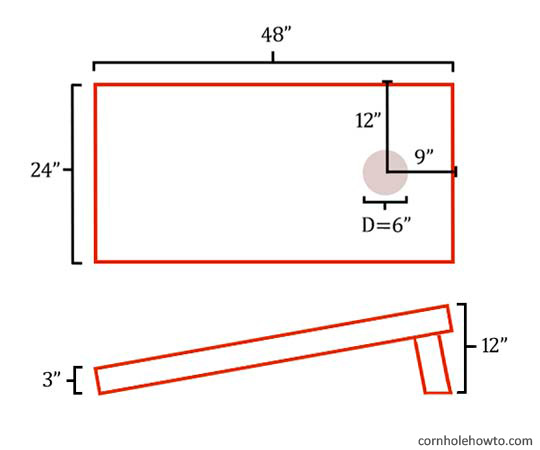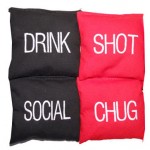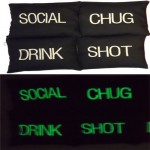Cornhole Information
Buy Cornhole Bean Bags
Want to Buy Cornhole Bags?
Here is What You Need to Know.
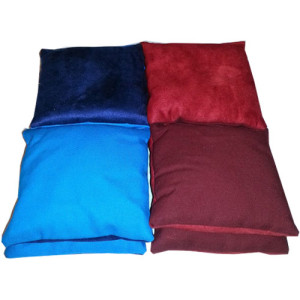 When you make the decision to buy your first set of cornhole bean bags, it can seem like a daunting task. You want to make sure you’re buying the best you can, without overpaying, but it’s difficult to know what makes one cornhole bag better than the next.
When you make the decision to buy your first set of cornhole bean bags, it can seem like a daunting task. You want to make sure you’re buying the best you can, without overpaying, but it’s difficult to know what makes one cornhole bag better than the next.
The good news is that some bags are better than others, and if you know what to look for, the process of finding the best set for the best price isn’t all that hard. With that in mind, this article was created to simplify your decision on which cornhole set would be perfect for you.
What to Look For When Buying Cornhole Bags
It’s very important that you get good cornhole bean bags. This is the part of the set that really takes a beating. If you end up with a set of super cheap cornhole bags made of poor quality, you’ll find yourself having to buy cornhole bags again before too long.
That being said, you shouldn’t judge cornhole bags by their price alone. The factor you should consider is quality. There are plenty of cheap cornhole bags that are still high quality.
The bag should be a square, where all sides are perfectly even. The cornhole bag weight should come out to about 15 ounces, and the weight needs to be consistent across each of the cornhole bean bags. As for the size, a general rule of thumb is that 6”x6” is the standard.
Some cornhole bags are often filled with beans or corn. Others are plastic-filled, synthetic-blend cotton and polyester bags. These plastic-filled bags are often your best bet and probably what you should look for when you buy cornhole bags because it means they are weather resistant.
The stitching is also a big deal. A set of poorly stitched bags will burst rather quickly. Look for bags that are double lock stitched and surged. This helps them to withstand the constant throwing that cornhole calls for.
Don’t forget to buy something that’s fun. Quality is important, but this game is meant to be enjoyed. Camo cornhole bags have gained popularity lately. Just make sure to find something that makes you happy and shows off your individuality.
Quality Cornhole Boards
Naturally, the quality of the cornhole bean bags is important. However, quality isn’t the only thing you’ll want to consider.
You’ll also want to think about the correlation between the bags and the boards. A professional-looking set will include bags and boards that match.
Consider the cornhole board designs you’re using. Will the bags match? You can opt for a set that matches exactly – like your favorite team logo on both. Or you can go with a set of cheap cornhole bags that simply use the corresponding board colors.
Do Your Research
Now you know what it takes to make a good cornhole set. Do some browsing and find some cornhole bags that are up to the task. Compare prices to make sure you’re getting the quality you need at a price that’s fair before you buy cornhole bags. Just because someone is offering you a good product doesn’t mean they can charge enough to run you into the ground.
Keep in mind that the quality of the cornhole bean bags is the most important part. These bags go through a lot when playing cornhole, so they need to be ready to meet the challenge.
- Published in Information
Choosing the Right Cornhole Board Designs
As the bags fly, there is a lot more to observe on the cornhole court than just the final score. Cornhole – while entertaining – is enlightening. It reveals little bits about the competitors they often don’t know are exposed.
Are the players uptight or laid back? Are they there to socialize or compete? Will they curse at a defeat or nobly shake the winner’s hand?
Nowhere is personality more telling than in the cornhole board designs. If you are eager to share the evidence of your true passions, here are a few tips and tricks to consider.
Tips and Tricks for the Best Cornhole Board Designs
Before you grab a set of custom cornhole boards, consider the following:
- No matter what the boards look like, it is important to adhere to cornhole board specs. Don’t sacrifice function for design. The official cornhole board specs are 23.5 inches by 47.5 inches. The hole (with a 6-inch diameter) should be centered 8 7/8 inches from the top of the board.
- Make sure the cornhole board design doesn’t interfere with game play. Don’t use a background color that is too dark; it might make it difficult to see the hole.
- Choose a high-gloss paint for your boards. This will help the bags glide smoothly across the surface.
Cornhole Design Inspiration
Maybe you know you want something totally unique, but you don’t know how to put your thoughts into action. Here are some ideas for totally original cornhole board designs.
- Use glow-in-the-dark paint. This ensures game play can continue after the sun goes down. You can also add lights to the boards for an even flashier appearance.
- Incorporate the hole into your cornhole board designs. Maybe the hole is strategically places where the eye of the skull would be. Or maybe it is the window of the ship. Use your imagination!
- Add cornhole decals. Even if you have very limited creativity, you can still have tricked out boards. Choose a decal for your favorite sports team. Paint the boards in corresponding colors. Add a decal. Slap on some varnish and you’re done!
- Buy (or make) matching cornhole bags. You can do something simple like sync the colors or you can go more advanced and incorporate specific aspects of the board design. While festive cornhole board designs are key, it is equally important to pay attention to the cornhole bag designs. Remember there are rules that govern official cornhole bags. Just like the cornhole board specs, don’t sacrifice function for style.
- Wrap the design all the way around the boards. The top of the board isn’t the only visible surface. Make the design continue on the sides too.
- Use a continuous image across both boards. Choose one design idea and have it spread across both boards. Be sure to choose an image that will ensure visual appeal on both halves.
- Be personal. Use your initials, family crest, or portrait in the design. Make sure everyone knows those boards are yours!
Do you have any other suggestions for tricked out cornhole board designs? Let us know!
- Published in Information
Frequently Asked Questions about Official Cornhole Bags
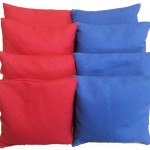 On the surface, cornhole is a very simple game – toss the bag through the hole. But when you dig a little deeper, there are an abundance of rules and regulations.
On the surface, cornhole is a very simple game – toss the bag through the hole. But when you dig a little deeper, there are an abundance of rules and regulations.
When it comes to regulation cornhole bags, there is actually quite a bit of information you need to be aware of. You can’t just buy eight bags and call it a day. If you want to be official and have regulation cornhole bags, you need to take the following things into consideration.
Q: What are the dimensions of regulation cornhole bags?
A: As we are all well aware, there is a rule for just about everything in cornhole – and size is no exception! Just like the official cornhole board measurements, there are regulations about the size of bags.
Each cornhole bag must be a minimum of 6 inches by 6 inches.
Q: What are cornhole bags made of?
A: Regulation cornhole bags are traditionally constructed of waterproof duck canvas. However, twill and synthetic suede are also acceptable.
Q: What is inside the bags?
A: Some cornhole bags are filled with – gasp! – beans! Perhaps the filling option originates from the less accurate game description of “bean bag toss.”
Other manufacturers like to use plastic pellets for filling. This makes the bags waterproof – as well as critter proof!
However, official cornhole bags are traditionally filled with corn.
Q: What is the cornhole bag weight?
A: Regulation cornhole bags must weigh between 14 and 16 ounces. If the cornhole bag weight is more or less than that, the player could be disqualified.
Q: How are official cornhole bags constructed?
A: During tournament play, it is especially important for all the bag filling to stay exactly where it is! Leaks and spills could lead to a disqualification.
Therefore, bags are made from two pieces of square fabric. The bags are constructed with durable upholstery thread that forms a double stitch all the way around.
Q: Are there any rules regarding the color of the bags?
A: Nope! You are free to be as creative as you want when it comes to the cornhole bag color. You can use single colored bags or multicolored bags. Some players opt for custom designs, embroidery, or even glow in the dark bags.
While there aren’t specific rules regarding the color, you do want to be mindful of the visibility. For example, tossing white bags at a white board could be difficult to see.
Q: I want to give cornhole bags as a gift. How will the recipient know they qualify as official cornhole bags?
A: Giving cornhole game supplies as a gift is a very common practice. They are often given out at birthdays, Christmas or even cornhole wedding receptions.
When you purchase cornhole bags as a gift, make a note of the company you shopped with. Some might automatically include a note of some kind that verifies their authenticity. If not, you could ask for one. Otherwise, simply refer the gift recipient to the company’s website. Most brag of their regulation cornhole bag status.
Do you have any cornhole bag questions we left off the list? Share your concerns with us!
- Published in Information
Everything You Need to Know about Cornhole Game Dimensions
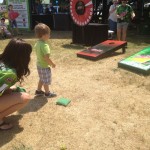 Cornhole is quickly taking over backyard barbeques and tailgating parties everywhere. Whether you are looking to take the game to the next level or are just getting to know the game, you should familiarize yourself with the rules and regulations of the cornhole game.
Cornhole is quickly taking over backyard barbeques and tailgating parties everywhere. Whether you are looking to take the game to the next level or are just getting to know the game, you should familiarize yourself with the rules and regulations of the cornhole game.
With so many different technicalities regarding cornhole game dimensions- boards, bags, and throwing- you may find that you have been playing incorrectly. And what’s the point of playing if you’re not going to do it right, right?
Cornhole Court Layout
Just like almost every other game, cornhole has its own “court.” The entire cornhole game dimensions should be 10 feet wide and at least 45 feet in length. We recommend setting up your field north to south (rather than east to west) to reduce sun interference. If your game is being played inside, or under a tent, there must be a 12 foot height clearance for tossing.
- Pitcher’s Zones: The pitching zones are basically the same size as the cornhole board, and are on both sides of the board. The zone is 4 feet by 3 feet; the player must stay inside of these dimensions to make the toss count.
- Foul Lines: The foul lines are the imaginary lines that run with the front of the cornhole board. The foul line should be 30 feet from the opponents’ hole in their cornhole board. If there are adolescents or children playing, their foul line is 21 feet from the opposing team’s hole in their cornhole board- it is best to mark this line for the younger players.
- More than One Cornhole Game: If there are multiple games of cornhole happening simultaneously, they should be at least 10, preferably 12, feet apart from each other.
Equipment Regulations
The court lengths aren’t the only specifics in this game; there are also cornhole bag dimensions and rules that apply to cornhole boards.
Cornhole Bags
This game is not played with your ordinary beanbags; cornhole bag dimensions are special! The end product should be a 6 inch square bag, weighing in at 14 to 16 ounces.
Start out with 12 inches of canvas, and cut into two identical squares (making sure the fabric color will be easy to spot in a game of cornhole). The bag should be filled with about two cups of corn feed and double stitched on all four sides.
Cornhole Boards
You can buy custom cornhole boards that are all finished and ready to go. Or, you can build your own. But if you choose to build your own, be sure to abide by the regulated cornhole board dimensions.
Additionally, the board should be sanded to a smooth finish, getting rid of any bumps or splinters that may interfere with a toss. When it comes to painting cornhole boards, you must cover the surface with a high gloss latex paint. This special type of paint will make the board smooth enough for the cornhole bags to slide, but won’t make them glide off of the board. White is the most common color for cornhole boards, but any non-distracting color that is easy to see is acceptable.
Though there are specific rules and dimensions for the game of cornhole, that doesn’t mean it has to be a serious, competitive sport! Cornhole is a laid back, family friendly game. These regulations are just to amplify the fun of the game!
- Published in Information
What Size is a Cornhole Board?
Cornhole Board Measurements & Dimensions
If you are entering an official cornhole tournament, you need to make sure your cornhole board dimensions are in accordance with regulation guidelines. Not all game sets are created equally and you need to make sure the cornhole board measurements are appropriate before making a purchase.
Here are the specifics regarding the cornhole board size.
Each cornhole game set will include two identical platforms. Each platform will have the following cornhole board dimensions:
- The surface of the board will measure 23 1/2 inches by 47 1/2 inches.
- The surface of the board will have a 6-inch diameter hole that is centered 8 7/8 inches from the top. The hole will also be centered 12 inches from each side of the board.
- The front edge of the cornhole boards will be 3 inches from the ground to the top of the playing surface.
- The back edge of the cornhole boards will be 12 inches from the ground to the top of the playing surface.
After the boards have been constructed, the following specifics should be noted:
- The angle formed between the leg and the bottom of the platform should be 109 degrees.
- The cornhole board measurements from the extended leg to the front edge of the platform should be 50 3/4 inches.
Most official cornhole organizations recommend painting the cornhole boards. The paint helps ensure the bags slide evenly, uninhibited by debris. Generally, it is recommended to choose a paint color in contrast to the cornhole bags; this makes it easier to identify bags when they are in play.
Also, painting lighter colors on the cornhole boards helps ensure the hole stays visible.
If you choose to add cornhole decals to your boards, choose ones that won’t interfere with play. Make sure they are securely attached to the board and won’t restrict bag movement.
In addition to worrying about the cornhole board size, participants should also recognize the rules associated with custom cornhole bags. Regulations are generally enforced on both sets of cornhole equipment.
Whether you are building or buying, it is essential to consider the cornhole board dimensions to ensure you are always engaging in fair play.
- Published in Information
Understanding The Rules of Cornhole
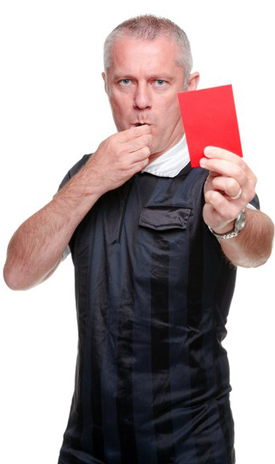 The game of cornhole is a pretty laid back diversion. But that doesn’t mean it’s free of rules. Fortunately, the cornhole game rules are pretty easy to understand and implement.
The game of cornhole is a pretty laid back diversion. But that doesn’t mean it’s free of rules. Fortunately, the cornhole game rules are pretty easy to understand and implement.
Rules That Apply to the Equipment
- Each cornhole game set consists of two cornhole boards and eight cornhole bags.
- The cornhole board shall measure 48 inches by 24 inches by 2 ½ inches.
- The angle between the cornhole board legs and the playing surface should be approximately 90 degrees.
- The surface of the cornhole board will have a single hole, six inches in diameter.
- The hole will be centered nine inches from the top of the board and 12 inches from either side.
- Each cornhole bag shall be constructed from two fabric squares that are joined by a quarter inch, double stitched seam around all four sides.
- Each bag should be filled with approximately two cups corn feed. The finished product will weigh 14 to 16 ounces and be a minimum of six inches by six inches.
Rules That Apply to the Court
- An outdoor cornhole court should measure 10 feet by 45 feet.
- An indoor court requires a bit more clearance; the court shall be 12 feet wide instead of just 10 feet.
- An indoor court also requires a minimum 12 foot vertical clearance for the lowest possible obstruction.
- When playing outside, courts should be situated in a north-south arrangement to avoid sun interference.
- From the front edge of one cornhole board to the front edge of the other, there shall be 27 feet. Another way to calculate the distance between boards is 33 feet from the bottom edge of the cornhole to the bottom edge of the other hole.
- The pitcher’s box is a four foot by three foot rectangle that is parallel to the cornhole board. There is a pitcher’s box on either side of the board.
Rules That Apply to the Gameplay
- Each cornhole game is broken down into innings.
- An inning has been completed when all contestants throw all four of their cornhole bags.
- Games can be played as singles or doubles.
- In singles gameplay, both contestants pitch from the same platform while aiming at the other. Once the inning has been completed, players will change positions and pitch at the other cornhole board.
- In doubles gameplay, one member of each team pitches from a chosen board. The other members pitch from the other.
Rules That Apply to Delivery
- In doubles, the two players standing at board A will pitch at board B. The players will alternate pitches until all the bags have been delivered. Then, the players standing at board B will follow the same procedure when pitching at board A. The inning is complete when all 16 bags have been pitched.
- In singles play, the two opponents will alternate pitches until all the bags have been tossed.
- A player may toss from either the left or right pitcher’s box. However, in one inning, all of the player’s bags must be delivered from the same box – switching mid-inning is not allowed.
- A player must pitch the entire game (and/or tournament) with the same hand.
- A bag must be delivered within 20 seconds of entering the pitcher’s box.
- The contestant who scored the most points in the previous inning shall pitch first in the next inning. If neither scored or there was a tie, the player who pitched last will pitch first.
Rules That Apply to Scoring
- A “bag-in-the-hole” or “hole-in” is any bag that passes through the hole. A bag can be tossed there or bumped through the hole by another bag. A hole-in earns three points.
- A bag that lands with any portion resting on the platform is considered “in the court.” A bag is only “in the court” if it did not touch the ground before coming in contact with the board. A bag “in the court” earns one point.
- If a bag touches the ground before landing on the board, it is considered a fowl. Any fowl bags must be removed from the court before play can resume.
- Cancellation scoring is traditionally used. In each inning (singles play) or half-inning (doubles play), the bags of opposing players that earn points cancel each other out.
- If player X tosses two “hole-ins” and player Y tosses four, player Y scores 6 points and player X scores 0.
- If player X tosses two “in the court” bags and player Y tosses four, player Y scores 2 point and player X scores 0.
- The first team to reach or exceed 21 points at the end of an inning wins.
- Gameplay cannot be terminated in the middle of an inning – everyone must throw all their bags.
- If the game is tied at 21 points (or more) at the end of an inning, play
- Published in Information
Tips for Painting Cornhole Boards
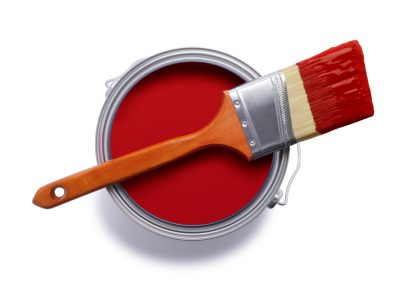
Many cornhole enthusiasts insist on painting cornhole boards themselves. By tackling the painting project yourself, you are adding a whole other level of ownership to your boards. In fact, we sell quite a few unpainted corn toss sets for that very reason.
However, the task isn’t an easy one. Often times, amateur painters get frustrated mid- project and the final results aren’t what they envisioned.
We have several tips to make the custom design process easier and more attractive. If you will be painting cornhole boards, consider the following dos and don’ts.
Painting Dos:

1. Be Realistic
Know what you can and can’t do with a paint brush. If this is one of your first painting projects, go with a less complex design. Leave the intricate details for future cornhole boards.
2. Make a Plan
Cornhole boards are pretty big. They might not look like it; but when you attack one with a fine-tipped paintbrush, you’ll quickly realize Rome wasn’t built in a day.
Spread your painting project out over a few days. Plan what needs to be done first and what will get accomplished at each subsequent painting session.
3. Set Goals
When faced with the big picture, it may seem like the project will never get done. Instead, carve out little tasks that are more manageable. For example, maybe you will paint the football on both boards the first day and the helmets the second day. Or maybe you’ll paint all the red areas first and then all the blue.
4. Use Your Time Wisely
Tackle the challenging aspects when you are feeling most ambitious. Don’t waste all your enthusiasm on simple tasks. Save the easy jobs for later.
5. Take Breaks
Get up and move around every once in a while. Go get a drink. Stretch. Don’t sit in the same position too long or your body will rebel.
Painting Don’ts:
1. Do It All At Once
Don’t try to complete the entire project in one sitting. You’ll get tired. And probably bored. You’ll start to have wobbly lines, patchy color and uneven paint layers. Work until you feel you’ve reached your daily limit and then walk away. Come back another time.
2. Spend A Lot Of Time Getting Ready
Don’t waste all your energy getting the project ready – printing visual resources, creating an accurate and detailed drawing on the boards, setting up the workstation, etc. All these little tasks will drain your enthusiasm for the main event. Once it comes time to start painting, you’ll be burned out.
3. Use Inferior Materials
Painting cornhole boards take a lot of time and energy. And hopefully, you’ll be using the boards for a while. They’ll be out on display multiple times with multiple audiences. Don’t you want them to look as good as possible? How do you expect to have amazing, custom boards if you gimp along with shoddy supplies?!
You know the expression, “You get what you pay for.” If you use cheap brushes and paints, your boards will look cheap too. Invest in quality supplies. You don’t need a ton of stuff, but the upgrade will definitely be worth it.
Painting your own cornhole boards is a great way to add a custom look to your game set. Plus, you’ll have an even greater sense of pride when you strut out onto the court. Grab a set of our unpainted corn toss boards and give it a try!
- Published in Information
Tips for Planning a Cornhole Tournament
Cornhole tournaments are hugely popular right now. If you are looking for a way to unite community members, support a great charity, or draw awareness to your business, it might be time to host a cornhole tournament.
Any time you gather a large group of people for a structured event, there will be headaches and drama. However, if you plan carefully, you can sidestep a lot of that nonsense. Here is how you do it.
Delegate
First of all, don’t try to tackle something like this on your own. Grab a couple of buddies or family members and give each one a task. Then, act as a manger and oversee everyone’s involvement. If you have enough willing “chairmen,” assign someone to each of the following areas:
- Venue
- Equipment
- Food and Beverage
- Marketing
- Registration
Venue
Choosing the venue should be the first thing on your to-do list. The venue will determine a lot of other factors.
Decide between an indoor event and an outdoor event; each has pros and cons. With an indoor event, you don’t have to worry about rain, wind or blazing sun. However, outdoor events tend to be more festive and bring a party atmosphere.
When scouting out venues, some suggestions include:
- School or community gymnasiums
- Parking lots
- The beach
- Parks
Once you have selected a venue, you can determine how many cornhole courts will fit. Remember, you’ll need to save space for the registration, food/beverage tent, and the spectator area.
Start thinking about how you will denote the designated space for each court. You’ll need a way to keep spectators away from the action. You’ll also want a way to mark the foot fault line (perhaps painter’s tape inside, spray paint outside).
Equipment
Will you have participants bring their own cornhole boards and bags? If so, you’ll need someone on hand to verify each regulation cornhole board and bag was constructed according to official standards.
If you will be providing the necessary equipment, you might want to think about rentals. This will help keep the costs down. If you are in the Clearwater, Florida area, Custom Corntoss has equipment available for rental.
Whether you purchase or rent, make sure the equipment is good quality and as uniform as possible. Also, have a few extra bags on hand in case some mysteriously go missing or bust after an energetic toss!
Food and Beverages
What is a cornhole tournament without booze and grub?! When it comes to the essentials, you basically have two options. You can provide the food and beverages yourself, or you can hire a local vendor. If you choose to sell alcohol, make sure the venue you chose has the necessary liquor license.
The person in charge of food and beverages should also round up all the extras – like plates, napkins, chairs, tables, etc.
Marketing
Marketing will be vital to your cornhole tournament’s success. Fortunately, the concept is quite popular, so you probably won’t have trouble finding people to join you.
Start with the most obvious tactic: social media. Social media can help spread the word about any event.
Then, look to traditional methods of marketing. Local newspapers and radio stations will usually advertise community happenings for a reasonable rate (sometimes even free).
Flyers might be old school, but they work. Try posting them where your target audience hangs out.
Registration
You can either have a pre-event registration (usually done online) or let participants register the day of the event.
If you do pre-registration, you might want to create a quick blog. Drive traffic to the blog and let them pay with their PayPal account.
If you have the registration the day of the event, you might want to have some extra security on hand. If you have a lot of interest in the event, you might have some angry wanna-be participants who don’t make the cutoff!
Cornhole tournaments are a lot of fun and can really help increase awareness for a cause or business. If you are interested in scoring some regulation cornhole boards or official cornhole bags, give us a call.
- Published in Information
Cornhole Bags
When you think of customizing your cornhole set, you probably think first of the boards. True, we can provide you with a set of custom boards that range from the basic (solid color, basic two and three-color sets) to the fully customized (wedding themed, flag sets, custom logs, or whatever else a person can imagine!). But Custom Corn Toss also specializes in creating many different types of cornhole bags to ensure that you have the perfect set of bags to go with your new set of boards.
Our standard 6”x6” bags are made to American Cornhole Association (ACA) standards with duck canvas, filled with one pound of corn, and double-stitched with heavy upholstery thread to ensure durability. We also have many options to ensure that you get the color that will match your cornhole boards perfectly.
If you want to go basic, these bags can be made with one solid color. If you are looking for something a little different, we specialize in two and three-color bags that are made with the same high quality stitching as our single color bags, ensuring you the durability required for the many hours that you will be playing the game!
Perhaps our most popular option for those looking for customized bag designs are the custom embroidered bags. If you have a logo that you’d like to see on a bag, all you have to do is upload your logo and we can embroider it on the same high quality material that we use for our standard bags. So whether it’s your company logo, a family crest, a wedding theme or anything else that you can come up with, we can put it on your cornhole bags.
In addition the above-mentioned ideas, some other popular cornhole bag options that we currently carry are drinking game bags, camouflage, baseball stitched, and weatherproof.
And, finally, don’t hesitate to contact us with any ideas that you have that don’t fit into one of the above categories. We pride ourselves on being able to work to create the perfect product for our customers. So, if you have a crazy idea, feel free to contact us and we’ll see what we can do. And don’t worry; your idea can’t be any crazier than bags that we’ve made:
- Published in Information
Cornhole (Corn Toss) Basics
If you’ve been trying to look for a new fun game that you can enjoy with friends and family, then you should check out the game of corn toss. Corn toss is one of the most popular outdoor games today and is known by many names such as bean bag toss, cornhole and soft horseshoes.
The next time you have a barbecue in your lawn or any outdoor gathering with your friends or family, give this game a ‘shoot’; like you would ‘shoot’ a corn bag into the hole of a corn toss board – get it?
Court Layout and Equipment
The cornhole game should be played in a rectangular area that measures about 10 feet in width and 45 feet in length. Both ends of the corn toss court will feature a corn platform. The corn platform will have a designated pitcher’s box on either side. The pitcher’s box is also rectangular in shape and must have dimensions of 4 feet by 3 feet. The pitcher’s box is where the player stands when doing a corn bag pitch. The corn toss court will also need to have foul lines. These foul lines can be divided into two sets: the open adult and the junior play foul lines. The open adult play foul line is an imaginary mark located about 30 feet from the hole on the opposite platform. On the other hand, the junior foul line is located about 21 feet from the opposing hole.
The only equipments you will need for playing Cornhole are regulation sized corn filled bags and two standard size boards for your corn platforms. The products for sale on this site are what we recommend, of course.
Mechanics and Scoring
A game of corn toss can be played in two ways. In a singles game, two contestants play against one another. In a doubles game, one team of two players plays against another team which consists of two players as well. Players on both sides stand on the pitcher’s box and begins tossing or pitching a corn bag alternately. Players toss four corn bags each. For a doubles game, the partners take turns pitching the corn bag. A player only has 20 seconds after entering the pitcher’s box to throw the corn bag.
Corn bags that are considered foul will earn zero points. A corn bag is considered foul if the following conditions apply:
- The corn bag was tossed after more than 20 seconds from when the player entered the pitcher’s box.
- The corn bag was tossed after the player has stepped out of the pitcher’s box.
- The corn bag hit an object which is not related to the game.
- The corn bag bounced on the court before hitting the corn platform.
The score of each tossed corn bag will depend on where the corn bag landed. A corn bag that enters the hole is worth three points. A corn bag that lands in the platform, but not inside the hole, is worth one point. Foul corn bags and corn bags that do not land on either the hole or the platform are not worth any points. Keep in mind that tossed corn bags can also cancel out each other in some cases. For instance, if you manage to throw the bag into the hole and so did the other player, then the two similar pitches cancel each other out.
A lot of fun can be had while playing corn toss. The game’s mechanics and all the ‘technical’ jibber jabber with regards the dimensions of the corn bags and the corn toss boards may seem complicated, but they’re really not. As with most things in life, they’re really just there just so that there’s some sort of “ground rules” everyone can follow. Once you get past that, you can play all the corn toss games you want in your lifetime without even having to scan through some rule book.
- Published in Information

